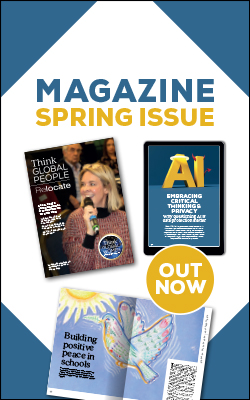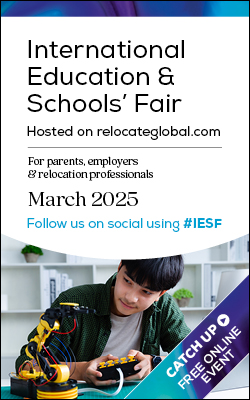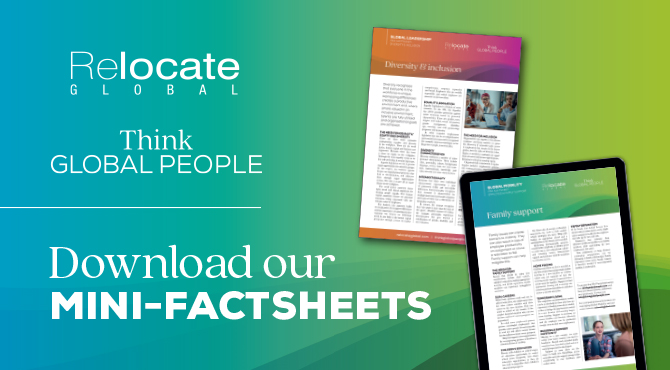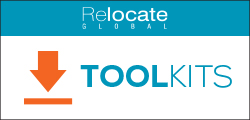Exploring AI in international schools
What are the opportunities and challenges of using AI in education, and how do students stand to benefit? We went to Pearson’s International School Leaders Conference to find out.

This article is taken from the Winter 2024 issue of
Think Global People magazine
The use of AI in education is not a new topic but while international schools are eager to embrace it, many are still getting to grips with how to integrate it.In his interactive keynote, ed tech advocate and assistant school director at Cambridge School of Bucharest, Matthew Wemyss, shared how AI can enhance productivity and learning.Kicking off with a short poll, 35% of the room said they use AI in a teaching capacity, while 50% revealed they use AI in a leadership capacity, and 12% stated they didn’t use AI at all.A top concern for delegates made up of school leaders, teachers and education providers was ethics and misuse of AI - namely plagiarism. Other concerns included potential student reliance on AI and threats to human and deep thinking, potential inequalities and persistent issues around trust, misinformation and deep fakes.However, all parties universally agreed that AI will have a huge impact on education over the next five years, and much of it is positive.
AI-enabled learning
Wemyss began by sharing the ways schools are using AI to help improve student outcomes, particularly when it comes to lesson planning and instruction and breaking down information for students.He illustrated how to refine AI prompts, as well as different methods to develop lesson plans and how AI can be used to create creative exercises.Weymyss urged delegates to not simply see AI as a technological tool but a collaborative partner. He explored how AI can enable student creativity in hybrid, remote and classroom settings, supporting more creative and lateral thinking and helping to expand student’s problem solving skills and critical thinking.Responding to questions around the hot topic of plagiarism, he shared how schools, including his own, are switching up policies so both students and teachers can better understand both the implications and guidelines of AI and plagiarism.“In an AI age, as schools, we need to adapt and be careful about the exercises students are sent home with and develop new and diverse ways of assessing a student’s understanding.Across our English and Humanities classes for instance, we’ve moved some of the report writing assessments to run over multiple lessons in school. Our students can go home and do their research online but our assessments will then be adjusted to focus more on the application of the information, so the source almost becomes a secondary concern.”Read related articles
- Learning how to think about the future and the skills business and students need
- Emerging trends in international schools
- Augmented learning
- AI in education
The AI literacy gap
With AI use across international schools increasing, Weymyss stressed a need for training and warned that educators will need to keep up with AI in order to lead on AI literacy.“According to the Barnardos Exploring AI with Children and Young People report 63% of children and young people are learning about AI from social media. Knowing what we know about social media and its impact, that knowledge of AI should be coming from a more reliable source,” he said.The report further highlights that parents have a very limited understanding of AI. “As schools, we need to step in and provide the correct information to both students and parents to help improve their understanding of what AI can and cannot do, as well as the risks of outsourcing your thinking to AI.”Citing the same paper, Wemyss added that 54% of children and young people want to learn more about AI at school and are becoming aware of the importance of it. Meanwhile, 87% of parents felt their children learning about AI now was either important or very important.Yet research shows a distinct lack of confidence and AI knowledge both in schools and at home. The report revealed 82% of children and young people say their parents or teachers know “some”, “not too much” or “nothing” about AI. An alarming 95% of teachers were shown to have not received any training in AI at all.At the Cambridge School of Bucharest, Wemyss discussed how they are tackling the issue of AI literacy head on, by providing online webinars and workshops on AI and sharing their school’s approach to AI with both students and parents.“Speaking to my year 13 students, who are getting ready to enter university, they are rightly concerned about the impact AI will have on their job prospects. We need more AI discussion at schools and to get ahead of the game. The last thing we want is for Tik Tok and social media to fill that void.”Wemyss reiterated the AI adoption gap between students and adults and discussed concerns around AI training and skills for teachers supported by statistics from the National Literacy Trust. “If we look at the UK for example, 75% of teachers would like more training, support and resources to use generative AI.”But the onus does not lie with teachers alone. He highlighted the need for parents to be familiar with AI too. “For students with a mobile phone, there are more and more AI tools appearing in apps all the time, so as a parent it’s about making sure you are familiar with what apps your child is using. At Cambridge School of Bucharest, we are helping to educate parents on apps and the use of them, how to identify if AI is built-in, and if they might need to put any restrictions in place.”AI policy was another key topic, with many schools still to formulate one. Wemyss offered some sound advice on where to start.“When creating an AI school policy, it’s important to remember that AI is changing all the time, so policies don’t have to be all-encompassing. Outlining how students and teachers can use AI and covering protections around data is a great place to start, as well as setting some guidelines for experimentation with AI tools. Then, create some clear parameters for AI experimentation, especially when it comes to student data and teacher usage of platforms, some of which aren't so safe and don't have sufficient safeguards in place.”Driving efficiency in schools
The end of his keynote looked at the powerful benefits of AI, particularly in cutting teacher workloads and increasing time spent with students on improving their learning and performance.Wemyss warned that “generative AI is a creator, not a recommender” so there are limits to it as it will be based on what it is trained with but added it is a useful tool for school leaders who can redirect much time spent on administration to high level tasks and delivering more personalised and innovative learning.Impressive examples of some AI efficiencies included teacher time spent marking, with Wemyss recalling marking 20 of his students coding Python work with generative AI in just 25 minutes.He demonstrated how AI can be used for marketing materials to handbooks, assembly plans and proofreading, and praised AI tools for assisting people with dyslexia by helping to read documents faster and making them clearer and more engaging to read.Wemyss listed a number of useful tools that are helping educators enhance their lessons, from Chat GPT to Perplexity, Notebook LM, Mindjoy, Microsoft Co-Pilot, Claude AI, School AI and Quizizz AI.As with any huge technology development, there will be a long period of trial and error.“Some of the promises of what AI was going to deliver in terms of personalised learning have not completely come to fruition yet but as these systems develop, so will that area,” he added.Wearable devices and standalone AI systems that directly interact and give advice to students also have some way to go, and have achieved questionable outcomes.His advice for schools, stick with traditional generative AI as a creator tool to improve efficiencies and allow you to spend more time on your students.Embedding AI in schools
A separate panel featuring Karim Rogers, Executive Director of El Alsson British and American International Schools and Natalie Williams, Director of Membership and Engagement at COBIS shared some top tips and considerations for schools embedding AI.Here were some of the quick takeaways:
- Schools need a safe and structured framework for using AI. Best practice guidelines are essential for both students and teachers.
- There is no standard or optimum level for AI use in schools. AI use should be split between operational, administrative, learning and education.
- When it comes to integrating AI, schools should start small and be specific.
- AI can have very positive impacts on assessments, these include real-time feedback, student personalisation, efficiency and improved evaluation of student performance.
- Plagiarism and monitoring the correct use of AI remains a concern and continues to be a complex issue for students, parents and teachers to navigate.
- Parents have concerns when it comes to the amount of AI and device use in schools.
- AI is being successfully used to encourage creativity and innovation in the classroom.
- The majority of teachers and students tend to use AI to assist with planning and administrative tasks.


Find out more about the Think Global People and Think Women community and events.


Subscribe to Relocate Extra, our monthly newsletter, to get all the latest international assignments and global mobility news.Relocate’s new Global Mobility Toolkit provides free information, practical advice and support for HR, global mobility managers and global teams operating overseas.
©2025 Re:locate magazine, published by Profile Locations, Spray Hill, Hastings Road, Lamberhurst, Kent TN3 8JB. All rights reserved. This publication (or any part thereof) may not be reproduced in any form without the prior written permission of Profile Locations. Profile Locations accepts no liability for the accuracy of the contents or any opinions expressed herein.









































